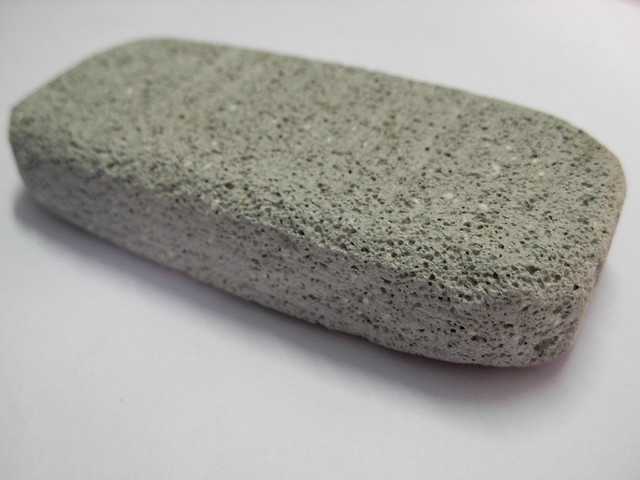
Photo by Ambuj Saxena
The first thing that probably comes to your mind when you see the word “pumice” is those tones you rub on your feet in order to remove calluses. There is, however, much more to pumice than pedicures, even though that is not an entirely incorrect assumption. This naturally-occurring rock has a number of practical applications.
It can be obtained in thin powders or large chunks. Most of the world’s supply of this rock is used in construction materials, but it is also used as an abrasive in cleaning supplies both for use around the home and for personal use. In this article, we will discuss a wide variety of uses of this extrusive volcanic igneous rock with a unique vesicular texture, from construction materials to beauty products.
1. As a cleaning abrasive
One of the best pumice’s qualities is that it’s abrasive. For this reason, it is valuable in applications which require a scrubbing substance. Some natural household cleaners contain powder ground from pumice as one of the main ingredients in order to help scour stains from floors, appliances, as well as other surfaces. In addition, some toothpaste also uses it, but in smaller amounts. It helps to remove plaque from the surface of teeth, even though it is not intended to be swallowed. Using it instead of more chemically-based cleaners can be appealing to consumers looking for green cleaners for body and home because the stone is a naturally-occurring substance.
2. Exfoliation
A number of dead skin removers and different body scrubs also rely on this natural element, either as ground into powder or a whole stone. In cleaners, the powder is usually added to scrubs or soaps to give them more grit as well as resistance. On the other hand, whole stones are usually formed into bars to allow ease of use when scrubbing the feet or other rough parts of the body. One cosmetic use of pumice that is not common is in lotions. However, it shouldn’t stay in contact with the skin for very long because of its roughness.
3. In construction
Furthermore, it is useful in some aspects of construction, due to its lightweight. When incorporated into plaster, concrete, or other construction materials, the finished product is substantially lighter compared to other mixtures while retaining the same strength. Additionally, the stone can be more cost-effective than a number of other construction materials, since it is naturally occurring and can be found around many volcanic sites worldwide.
4. Uses in agriculture
When ground, it is commonly added to soil on new gardening plots or farms to help roots take hold and improve overall quality. Furthermore, it can help water distribution and retention in the ground. It is also used on hydroponic farms in some places as a way of supporting and sustaining the roots of plants grown without soil, often in greenhouses or in other special constructions.
5. For pets
Sometimes, there is a demand for pumice in the pet care industry. Some small domestic animals usually chew on bricks of it in order to help keep their teeth clean and filed. This is common when guinea pigs, gerbils, and chinchillas are concerned. On the other hand, pumice chew toys are not often recommended for larger animals, such as cats and dogs, because the strength of these animals’ jaws can crumble or break the stone.



